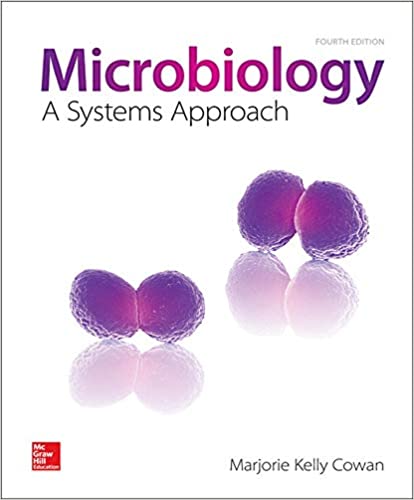
Microbiology: A Systems Approach 4th Edition by Marjorie Kelly Cowan
Edition 4ISBN: 978-0073402437
Microbiology: A Systems Approach 4th Edition by Marjorie Kelly Cowan
Edition 4ISBN: 978-0073402437 Exercise 41
coli O104:H4: The Ugly Stepsister of E.coli O157:H7
In May 2011, disturbing reports of outbreaks of enterohemorrhagic E. coli (EHEC) began to emerge from Germany. Generally, strains of E. coli cause relatively mild cases of diarrhea, also known as traveler's diarrhea, or a mild form of dysentery, both of which resolve with minimal treatment. When the reporting of illness subsided in mid-June, there were a total of 855 cases of hemolytic uremic syndrome (HUS) and 2,987 cases of acute gastroenteritis associated with the outbreak. Thirty-five deaths were attributed to HUS, while 18 were due to EHEC gastroenteritis, making this the largest outbreak of food-borne disease ever recorded in Germany. Cases were reported throughout all of the states of Germany, and a majority of the cases were tied to consumption of contaminated bean sprouts. Epidemiologists linked several cases from the German outbreak to other cases found in Bordeaux, France. Six cases of illness and one death in the United States were linked to the outbreak, and all patients were determined to be recent travelers to Germany.
What are the steps that should be taken to identify the specific cause of this outbreak
How is a case of EHEC different than other food-borne infections caused by E. coli
Cases of EHEC are usually associated with the notorious strain E. coli O157:H7, but this outbreak was caused by the lesser-known strain E. coli O104:H4. Both strains of E. coli produce the Shiga toxin that causes bloody diarrhea and HUS, but the O104:H4 strain had previously not been found in animals and only rarely in humans. Scientists and doctors analyzed stool samples of patients showing symptoms of EHEC and HUS in an attempt to isolate the Shiga-toxin-producing pathogen. Genomic analysis of specimens revealed that the O104:H4 strain rather than the O157:H7 strain was causing illness in the patients. Moreover, the scientists confirmed that it was resistant to at least 14 different antibiotics.

What type of microbial media might have been used to identify E. coli O104:H4
In May 2011, disturbing reports of outbreaks of enterohemorrhagic E. coli (EHEC) began to emerge from Germany. Generally, strains of E. coli cause relatively mild cases of diarrhea, also known as traveler's diarrhea, or a mild form of dysentery, both of which resolve with minimal treatment. When the reporting of illness subsided in mid-June, there were a total of 855 cases of hemolytic uremic syndrome (HUS) and 2,987 cases of acute gastroenteritis associated with the outbreak. Thirty-five deaths were attributed to HUS, while 18 were due to EHEC gastroenteritis, making this the largest outbreak of food-borne disease ever recorded in Germany. Cases were reported throughout all of the states of Germany, and a majority of the cases were tied to consumption of contaminated bean sprouts. Epidemiologists linked several cases from the German outbreak to other cases found in Bordeaux, France. Six cases of illness and one death in the United States were linked to the outbreak, and all patients were determined to be recent travelers to Germany.
What are the steps that should be taken to identify the specific cause of this outbreak
How is a case of EHEC different than other food-borne infections caused by E. coli
Cases of EHEC are usually associated with the notorious strain E. coli O157:H7, but this outbreak was caused by the lesser-known strain E. coli O104:H4. Both strains of E. coli produce the Shiga toxin that causes bloody diarrhea and HUS, but the O104:H4 strain had previously not been found in animals and only rarely in humans. Scientists and doctors analyzed stool samples of patients showing symptoms of EHEC and HUS in an attempt to isolate the Shiga-toxin-producing pathogen. Genomic analysis of specimens revealed that the O104:H4 strain rather than the O157:H7 strain was causing illness in the patients. Moreover, the scientists confirmed that it was resistant to at least 14 different antibiotics.

What type of microbial media might have been used to identify E. coli O104:H4
Explanation
In order to identify the cause of an out...
Microbiology: A Systems Approach 4th Edition by Marjorie Kelly Cowan
Why don’t you like this exercise?
Other Minimum 8 character and maximum 255 character
Character 255


